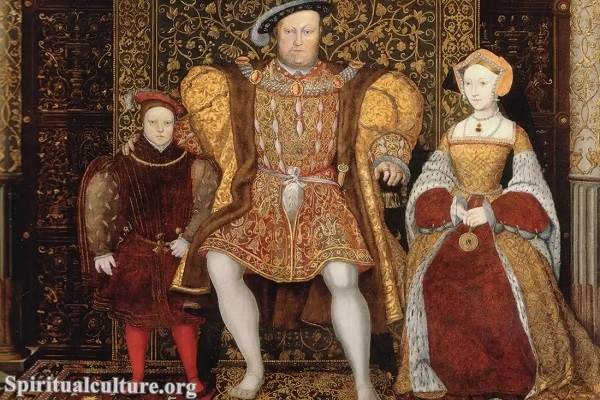Henry VIII, a name that echoes down the corridors of history, was one of the most influential figures in the establishment of Protestantism in England. Known for his six marriages, his quest for a male heir, and his break with the Roman Catholic Church, Henry VIII’s reign was a tumultuous period in English history, which led to significant religious reform and the establishment of the Church of England.
Henry VIII was born on June 28, 1491, and became king in 1509 following the death of his father, Henry VII. He was initially a devout Catholic and even wrote a defense of the seven sacraments in response to Martin Luther’s criticisms of the Church, for which Pope Leo X awarded him the title “Defender of the Faith.” However, his religious beliefs took a dramatic turn when he sought to annul his marriage to his first wife, Catherine of Aragon, to marry Anne Boleyn, who he hoped would give him a male heir.
The Pope’s refusal to annul Henry’s marriage to Catherine led to a political and religious standoff known as the King’s “Great Matter.” This crisis eventually resulted in Henry breaking with the Roman Catholic Church and establishing himself as the head of the Church of England in 1534, a move that paved the way for the rise of Protestantism in England.

Henry VIII (1491-1547)
The Church of England, under Henry VIII’s leadership, was initially not markedly different from the Catholic Church, apart from its rejection of papal authority. However, the break with Rome opened the door for more radical religious reformers, many of whom had been influenced by the ideas of Martin Luther and other Protestant reformers on the continent.
Henry VIII’s reign saw the dissolution of the monasteries, a process in which the religious houses of England and Wales were disbanded and their property taken by the crown. This was partly a means of raising money to fund Henry’s military campaigns, but it also represented a significant blow to the power and influence of the Catholic Church in England.
The dissolution of the monasteries and the suppression of Catholic practices were met with resistance, most notably in the form of the Pilgrimage of Grace, a large-scale rebellion in northern England in 1536. However, the rebellion was crushed, and Henry’s religious reforms continued.
Despite his break with the Catholic Church, Henry VIII did not fully embrace Protestant theology during his lifetime. His religious beliefs remained a mix of traditional Catholic doctrine and some Protestant ideas. For example, he rejected the idea of justification by faith alone and maintained a belief in the real presence of Christ in the Eucharist, both of which were central tenets of Catholic belief.
However, the religious changes initiated during Henry VIII’s reign had a profound and lasting impact on England. His decision to break with Rome and establish the Church of England set the stage for the further spread of Protestantism in the 16th and 17th centuries. His son, Edward VI, and later, his daughter, Elizabeth I, would continue the process of religious reform, fully embracing Protestantism and shaping the Church of England into a distinctly Protestant church.
In conclusion, Henry VIII, while a complex and often controversial figure, played a pivotal role in the history of Protestantism. His break with the Catholic Church and the subsequent religious reforms during his reign laid the groundwork for the establishment of the Church of England and the spread of Protestantism in England. His legacy, therefore, is not just one of marital infidelity and political intrigue, but also of profound religious change and the birth of a new religious identity for England.


